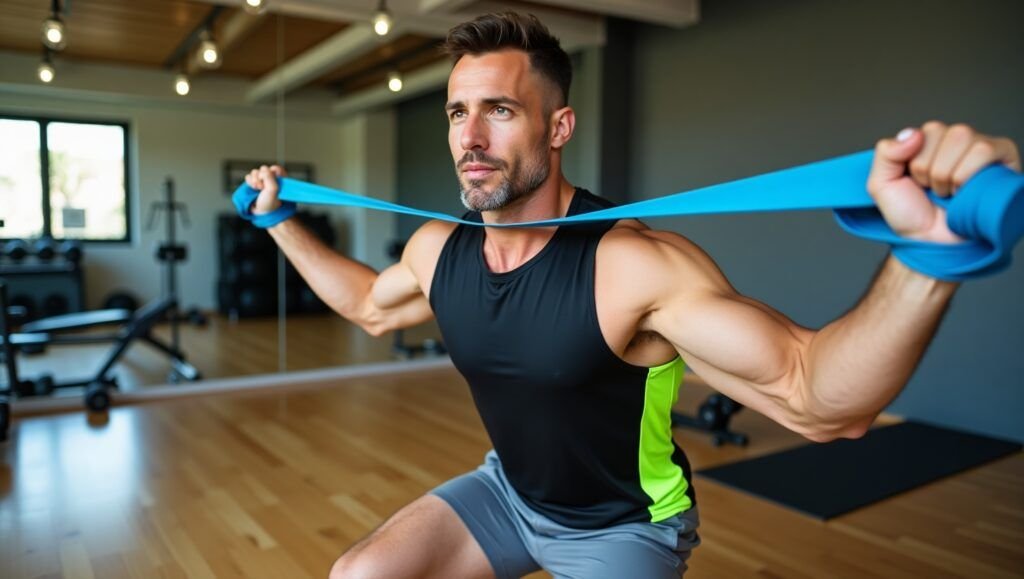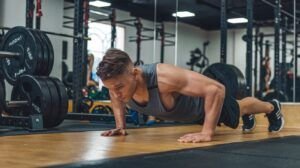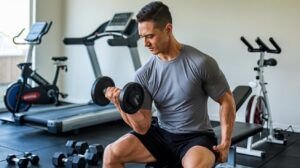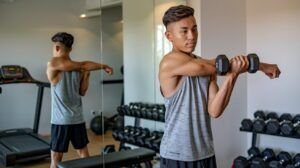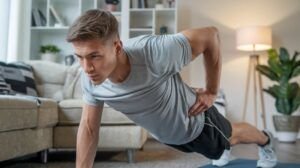Training with resistance bands at home is one of the simplest and most effective ways to stay fit. These versatile tools are lightweight, affordable, and easy to use, making them an excellent choice for people of all fitness levels. Whether you want to build strength, tone your muscles, or improve flexibility, resistance bands can help you achieve your fitness goals without needing a gym membership or bulky equipment.
Resistance bands work by creating tension, which challenges your muscles during movement. They are ideal for small spaces and can be easily stored or carried wherever you go. From beginners to advanced fitness enthusiasts, anyone can enjoy using resistance bands to create a complete workout routine.
This content will give practical tips and step-by-step instructions to help you train effectively with resistance bands at home. It will cover exercises for different muscle groups, safety tips, and ways to get the most out of your workouts. Start your fitness journey today with resistance bands and see how easy it is to stay active, strong, and healthy!
Why Resistance Bands?
Resistance bands are a great alternative to traditional weights. They offer several benefits:
Portability: You can carry them anywhere.
Cost-Effective: They’re cheaper than gym equipment.
Versatility: Suitable for various exercises targeting different muscle groups.
Joint-Friendly: They provide smooth resistance, reducing the risk of injury.
Let’s explore how to use resistance bands effectively at home.
Before you start, follow these steps:
Choose the Right Band: Resistance bands come in different levels—light, medium, heavy, and extra heavy. Select a band based on your fitness level.
Warm-Up: Spend 5-10 minutes warming up your muscles with light cardio like jogging in place or arm circles.
Secure the Band: Ensure the band is anchored properly to prevent it from snapping.
Upper Body Exercises
Bicep Curls
Bicep curls are a simple and effective exercise that helps strengthen and tone the biceps, the muscles located at the front of your upper arms. This exercise is widely popular because it is easy to learn and can be done almost anywhere with minimal equipment. Whether you use dumbbells, resistance bands, or even household items like water bottles, bicep curls are versatile and accessible for all fitness levels.
The primary benefit of bicep curls is building arm strength. Strong biceps make everyday tasks like lifting, carrying, and pulling much easier. This exercise also improves the appearance of your arms, helping you achieve a more defined and toned look. Additionally, it contributes to overall upper-body strength, which supports better posture and balance.
To perform bicep curls, stand straight, hold the weight or resistance, and bend your elbows to lift your hands toward your shoulders. Keep your movements slow and controlled to engage the muscles properly. Adjust the resistance or weight based on your fitness level.
By including bicep curls in your workout routine, you can enjoy stronger arms, better functionality in daily life, and a boost in confidence. It’s a small effort with big rewards!
How to Do It:
- Stand on the resistance band with feet shoulder-width apart.
- Hold the handles with palms facing forward.
- Curl your hands toward your shoulders.
- Lower back down slowly.
Reps: Perform 12-15 repetitions for 3 sets.
Bicep curls are a simple and effective exercise that helps strengthen and tone the biceps, the muscles located at the front of your upper arms. This exercise is widely popular because it is easy to learn and can be done almost anywhere with minimal equipment. Whether you use dumbbells, resistance bands, or even household items like water bottles, bicep curls are accessible for all fitness levels.
The primary benefit of bicep curls is building arm strength. Strong biceps make everyday tasks like lifting, carrying, and pulling much easier. This exercise also improves the appearance of your arms, helping you achieve a more defined and toned look. Additionally, it contributes to overall upper-body strength, which supports better posture and balance.
To perform bicep curls, stand straight, hold the weight or resistance, and bend your elbows to lift your hands toward your shoulders. Keep your movements slow and controlled to engage the muscles properly. Adjust the resistance or weight based on your fitness level.
How to Do It:
- Step on the band and hold the handles at shoulder height.
- Push your hands upward until your arms are fully extended.
- Lower them back to shoulder height.
Reps: 10-12 repetitions for 3 sets.
Tricep Extensions
Tricep extensions are a great exercise to strengthen and tone the triceps, the muscles at the back of your upper arms. This simple movement helps improve arm definition and builds upper-body strength. You can perform tricep extensions using dumbbells, resistance bands, or even household items. To do the exercise, hold the weight overhead, then lower it behind your head while keeping your elbows steady. Slowly return to the starting position. Tricep extensions are effective for enhancing arm mobility and making daily tasks like pushing or lifting easier. Adding this exercise to your routine can lead to stronger, more toned arms.
How to Do It:
- Anchor the band above your head.
- Hold the handles and extend your arms overhead.
- Slowly bend your elbows and lower your hands behind your head.
- Extend your arms back up.
Reps: 10-15 repetitions for 3 sets.
Lower Body Exercises
Squats
Squats are a powerful exercise that strengthens the lower body, particularly the thighs, hips, and buttocks. They also engage the core muscles for stability. This simple movement involves bending the knees while lowering the body, then pushing back up to a standing position. Squats can be done with just body weight or with added resistance like dumbbells or barbells. Regular practice improves mobility, increases strength, and enhances balance. They are effective for building muscle, burning fat, and improving fitness. Whether at home or the gym, squats are a fundamental exercise for achieving a strong and toned body.
How to Do It:
- Place the band around your thighs.
- Stand with feet shoulder-width apart.
- Lower your body into a squat position, keeping your back straight.
- Push back up to the starting position.
Reps: 12-15 repetitions for 3 sets.
Glute bridges are an effective exercise that targets the glutes, hamstrings, and lower back. To perform a glute bridge, lie on your back with your knees bent and feet flat on the floor, hip-width apart. Press through your heels and lift your hips toward the ceiling, squeezing your glutes at the top. Lower back down with control. This movement helps improve hip mobility, strengthen the glutes, and stabilize the core. Glute bridges are great for improving posture, reducing lower back pain, and enhancing athletic performance. They can be done anywhere and are perfect for building a stronger, firmer backside.
How to Do It:
- Lie on your back with the band around your thighs.
- Bend your knees and keep your feet flat on the ground.
- Lift your hips until your body forms a straight line.
- Lower back down.
Reps: 12-15 repetitions for 3 sets.
Side-Lying Leg Lifts
Side-lying leg lifts are a great exercise for strengthening the hips, glutes, and outer thighs. To perform this move, lie on your side with your legs straight and stacked on top of each other. Rest your head on your arm and keep your core engaged. Slowly lift the top leg towards the ceiling, keeping it straight, then lower it back down without touching the bottom leg. Repeat the movement for several reps before switching sides. This exercise improves hip stability, tones the legs, and enhances lower body strength. It’s simple but effective for targeting the outer thighs and glutes.
How to Do It:
- Lie on your side with the band around your ankles.
- Lift your top leg as high as you can.
- Lower it back down slowly.
Reps: 10-12 repetitions on each side for 3 sets.
Core Exercises
Russian Twists
Russian twists are a dynamic core exercise that targets the obliques, abs, and lower back. To perform a Russian twist, sit on the floor with your knees bent and feet flat, leaning back slightly to engage your core. Hold your hands together or use a weight or medicine ball for added resistance. Twist your torso to one side, bringing your hands towards the floor next to your hip, then twist to the other side. Keep your back straight and control the movement. Russian twists help improve rotational strength, enhance core stability, and tone the waist, making them effective for building a stronger midsection.
How to Do It:
- Sit on the floor with your legs slightly bent.
- Wrap the band around your feet and hold the ends with both hands.
- Twist your torso to one side, then the other.
Reps: 15 twists per side for 3 sets.
Plank rows are a challenging exercise that targets the core, shoulders, and back. To perform a plank row, start in a high plank position with your hands holding dumbbells, directly under your shoulders. Keep your body in a straight line from head to heels and engage your core. Row one dumbbell towards your hip, while keeping your body as stable as possible. Lower the dumbbell back to the floor, then repeat on the other side. Plank rows improve upper body strength. They enhance core stability, and work on balance and coordination, making a great full-body exercise for strength.
How to Do It:
- Anchor the band and hold one handle in a plank position.
- Pull the handle toward your chest while keeping your body stable.
- Return to the starting position.
Reps: 10-12 repetitions per side for 3 sets.
Bicycle Crunches with Bands
Bicycle crunches with bands are an advanced variation of the classic bicycle crunch that adds resistance to engage the core muscles more effectively. To perform this exercise, lie on your back with a resistance band looped around your feet. Lift your shoulders off the ground and bring your knees toward your chest. As you extend one leg out, twist your torso to bring the opposite elbow toward the bent knee. The resistance band adds extra tension as you extend your leg, increasing the challenge. Continue alternating sides in a controlled, smooth motion. This exercise targets the abs, obliques, and hip flexors, helping to tone and strengthen the core.
How to Do It:
- Wrap the band around your feet.
- Lie on your back and lift your legs off the ground.
- Perform bicycle crunches, alternating your elbows and knees.
Reps: 15-20 repetitions per side for 3 sets.
Full-Body Exercises
Deadlifts are a fundamental strength exercise that primarily targets the lower back, glutes, hamstrings, and core. To perform a deadlift, stand with your feet hip-width apart and a barbell or weights in front of you. Bend at the hips and knees, keeping your back straight and chest lifted, to grip the barbell with both hands. Push through your heels as you lift the barbell, straightening your back and hips simultaneously. Lower the weight back to the floor with control. Deadlifts help build strength, improve posture, and increase muscle mass in the lower body and core. Proper form is key to avoiding injury and maximizing results.
How to Do It:
- Stand on the band and hold the handles.
- Bend your knees slightly and hinge at your hips.
- Pull the handles upward as you straighten your body.
Reps: 10-12 repetitions for 3 sets.
The standing chest press is an effective exercise that targets the chest, shoulders, and triceps while also engaging the core for stability. To perform this exercise, stand with your feet shoulder-width apart, holding resistance bands or a cable machine handles in both hands. Start with your elbows bent at 90 degrees and your hands close to your chest. Press the bands or cables forward, extending your arms straight in front of you. Slowly return to the starting position with control. The standing chest press works the same muscles as a traditional chest press but also challenges your balance and core strength, making it a great functional exercise.
How to Do It:
- Anchor the band behind you.
- Hold the handles and push your hands forward.
- Bring them back slowly.
Reps: 12-15 repetitions for 3 sets.
Woodchoppers
Woodchoppers are a great exercise for engaging the core, especially the obliques, while also targeting the shoulders and legs. To perform a woodchopper, stand with your feet shoulder-width apart and hold a dumbbell, medicine ball, or cable handle with both hands. Start with the weight positioned near one hip, then rotate your torso to bring it diagonally across your body to the opposite shoulder, engaging your core as you twist. Control the movement back to the starting position. Repeat on the other side. Woodchoppers enhance rotational strength, improve balance, and help develop functional movement patterns.
How to Do It:
- Anchor the band at shoulder height.
- Hold the handle with both hands.
- Pull the band diagonally across your body.
- Return to the starting position.
Reps: 10-12 repetitions per side for 3 sets.
Tips for Effective Training
Maintain Proper Form: Focus on technique to avoid injuries.
Control Movements: Move slowly and with control during each exercise.
Adjust Resistance: Use a heavier or lighter band as needed.
Breathe Properly: Exhale during exertion and inhale during relaxation.
Stay Consistent: Train at least 3-4 times a week for best results.
Conclusion
In conclusion, training with resistance bands at home is an effective and convenient way to build strength, improve flexibility, and enhance fitness. Resistance bands are versatile, affordable. They can target various muscle groups, making them perfect for full-body workouts. As a beginner or advanced, you can adjust the resistance to match your fitness level. Adding resistance band exercises into your routine helps improve muscle tone, mobility. With consistent effort and proper technique, you can achieve great results without the need for expensive gym equipment or a lot of space.

